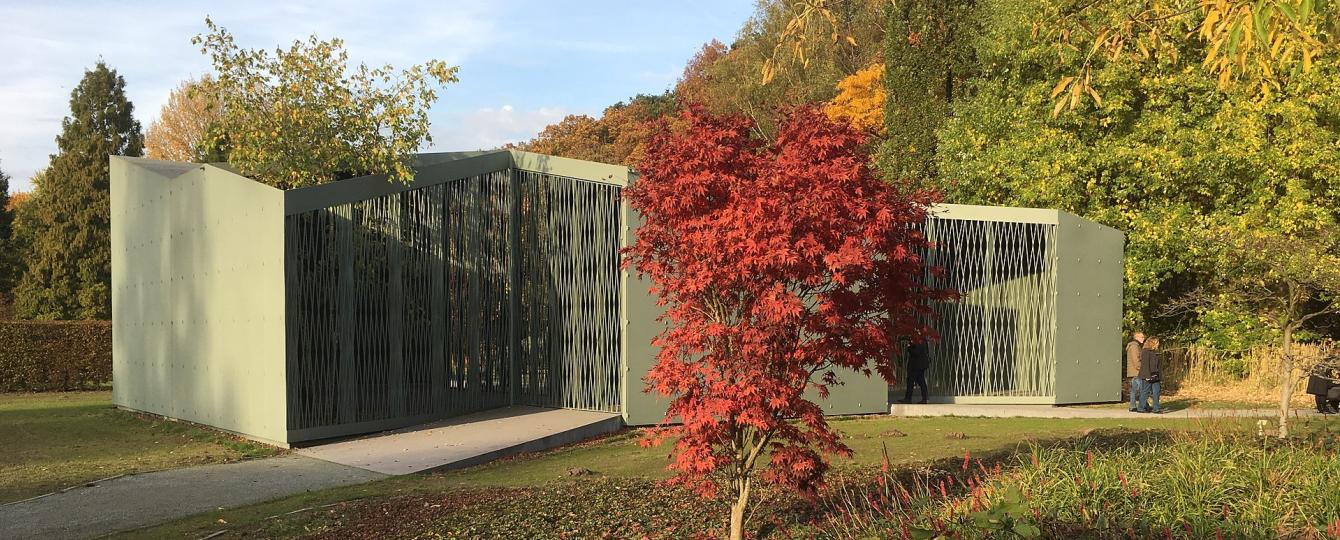 © Sandra Fauconnier
© Sandra Fauconnier
The House
Het Huis (The house) is a semi-open pavilion, which was designed by the architects Robbrecht and Daem for temporary exhibitions in Hortiflora and built 2012 Design. The nature in the form of sunlight, wind, insects and falling leaves remains a strong presence in this building.

